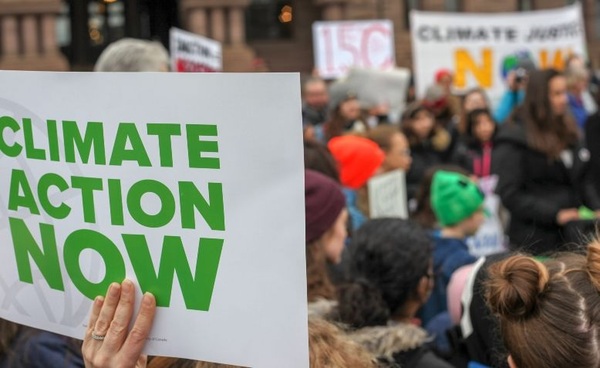
–>
September 28, 2022
In the early 1970s I was a disaffected youth. I began working at the nonprofit Zero Population Growth. We promoted the idea that exploding human population would soon make the world uninhabitable.
‘); googletag.cmd.push(function () { googletag.display(‘div-gpt-ad-1609268089992-0’); }); }
The president of our organization went on the Johnny Carson television show. Sacks of mail, often with checks, arrived. The psychological effect was intoxicating.
One of our directors, a college professor, suggested that vending machines could sell suicide pills as a method of reducing the population. We did everything possible to shut that bad idea down. Not for moral reasons but to protect the organization. We wanted more members, more influence, and more money. Our motivation had changed from saving the Earth to getting more money and power.
Everything that Zero Population Growth promoted turned out to be wrong. The “population bomb” was a dud. There were no famines. People became better nourished even in the poorest countries. Rather than exponentially growing population, population growth slowed and even crashed in the richer countries. I learned a lifelong lesson of skepticism.
‘); googletag.cmd.push(function () { googletag.display(‘div-gpt-ad-1609270365559-0’); }); }
Thirty years later I retired from my work as an engineer and began what became a ten-year study of climate change. I went to scientific conferences and worked hard at making friends with climate scientists. I realized that the science predicting future doom from emissions of carbon dioxide was wildly speculative. Individual climate scientists did good work but accurately predicting the future climate was not realistic. I could not but help notice a climate of fear that prevented scientists from opposing the climate doom narrative. The labs and universities that employed scientists did not want any dissident voices that might torpedo the flow of money from Washington.
This was all predicted in the 1961 farewell address by President Eisenhower. He was worried that the science establishment, that he called the scientific-technical elite, would warp science to influence government policy for its own benefit.
/Dwight Eisenhower was a greatly underestimated President. His practical insight into human nature is illustrated by the fact that he made loads of money playing poker while in the Army. He also graduated first in his class out of 240 senior officers at the Army War College. Although President Eisenhower was usually depicted as a lightweight by the media, his insights were uncannily accurate.
Today’s climate crisis is a modern example of public policy being ruined by a self-interested scientific-technological elite. World governments are spending trillions to avoid an imaginary climate crisis. Bizarrely, the methods selected to avoid the crisis — windmills and solar panels — can’t possibly accomplish much, even if the crisis were real.
Climate scientists think they are engaged in one of the hard sciences. But climate science is actually a soft science because its conclusions depend on the statistical analysis of noisy and dubious data using complicated and opaque computerized models. It is the perfect setup for confirmation bias, the tendency for scientists to arrive at conclusions that support their preconceived prejudices. Worse than confirmation bias is lying and fakery in the pursuit of money and power, also not unknown.
There are plenty of climate scientists who have doubts, but they have to keep their doubts hidden. They are employees of large institutions and they have families and mortgages. The scientists that speak out are either retired or have impregnable positions due to exceptional scientific accomplishment. Among professional climate scientists, public opposition to the climate doom theory is rare, but it does happen — I know of one climate scientist that forged a successful career as a denier, running over his opponents with raw courage and entrepreneurial talent.
‘); googletag.cmd.push(function () { googletag.display(‘div-gpt-ad-1609268078422-0’); }); } if (publir_show_ads) { document.write(“
Much of the opposition to the climate doom narrative comes from amateur scientists. These are typically politically savvy individuals with scientific backgrounds. Their credibility is limited by their lack of official professional qualifications, but they are immune to the establishment’s retaliations. Usually, they are retired, have their own businesses or are wealthy. The Internet makes it possible for them to speak to the world. They are reviving a tradition of amateur scientists that was dominant prior to the twentieth century.
Here are some examples of amateur scientists: Stephen McIntyre a retired Canadian mining expert runs the website climateaudit.org. Tony Heller, an electrical engineer, runs the website realclimatescience.com. Anthony Watts, a television meteorologist, runs the website wattsupwiththat.com. There are many more.
 Rogue science could not have built the climate crisis empire without the help of the environmental movement. The environmental movement is always looking for an environmental “crisis” to which they can hitch their wagons. The environmental movement attracts disaffected youth looking for meaning in life as well as old lefties that see the movement as a path to a socialist utopia. Some of these non-profit organizations have great political influence and big budgets. They are driven by money and power. They lie shamelessly, hiding behind a façade of earnest concern.
Rogue science could not have built the climate crisis empire without the help of the environmental movement. The environmental movement is always looking for an environmental “crisis” to which they can hitch their wagons. The environmental movement attracts disaffected youth looking for meaning in life as well as old lefties that see the movement as a path to a socialist utopia. Some of these non-profit organizations have great political influence and big budgets. They are driven by money and power. They lie shamelessly, hiding behind a façade of earnest concern.
Patrick Moore, a genuine scientist and one of the founders of Greenpeace, had an epiphany and left the climate change movement. His book, Fake Invisible Catastrophes and Threats of Doom, should be read by everyone with an open mind. Greg Wrightstone, a geologist, wrote: Inconvenient Facts: The science that Al Gore doesn’t want you to know. The book is an accessible and powerful indictment of the climate crisis. The MIT scientist Richard Lindzen, a climate scientist who made important discoveries, exposed the reality of climate science and environmentalism from an insider’s viewpoint in his profound essay: Climate Science: Is it currently designed to answer questions? Donna Laframboise exposed the unbelievable corruption within the supposedly authoritative United Nations International Panel on Climate Change with her book: The Delinquent Teenager Who Was Mistaken for the World’s Top Climate expert.
Many dislike the term “climate denier” because it is intended as a smear against anyone that even questions the climate crisis. My own feeling is that it is better to wear this label as a badge of honor and thus play jiu jitsu with the climate establishment’s organs of propaganda.
We live in an age encapsulated by Romans 1:22: “Professing themselves to be wise, they became fools.”
Formerly respectable medical institutions are trying to change boys into girls and vice versa with drugs and surgery.
Most big media present the climate crisis as if it is a solid scientific finding. They depict deniers as crackpots or paid spokesmen for oil companies. This is the arrogance of people who think they know everything but live in a sea of ignorance. The real investigative reporters work for minor, independent media without the vast money laden resources of big media.
Establishment climate science has become infatuated by its own imagined expertise and importance. Like many things in human history, arrogance is nothing new. We should remember the persecution of Galileo for suggesting that the Earth revolves about the sun, not vice versa.
Norman Rogers is the author of the book Dumb Energy about wind and solar energy. He is on the board of the CO2 Coalition. He has websites here and here.
Image: Public Domain
<!– if(page_width_onload <= 479) { document.write("
“); googletag.cmd.push(function() { googletag.display(‘div-gpt-ad-1345489840937-4’); }); } –> If you experience technical problems, please write to [email protected]
FOLLOW US ON
<!–
–>
<!– _qoptions={ qacct:”p-9bKF-NgTuSFM6″ }; ![]() –> <!—-> <!– var addthis_share = { email_template: “new_template” } –>
–> <!—-> <!– var addthis_share = { email_template: “new_template” } –>




